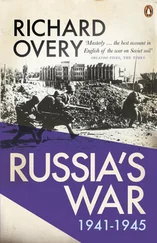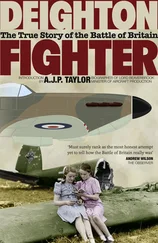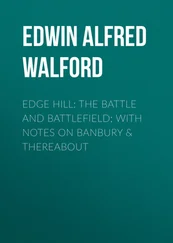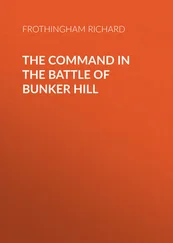The raids in August produced a change in mood. With the intensification of bomb attack, Home Intelligence found that morale stiffened; the spirit of those in raided areas was regarded as ‘excellent’, the shock of war on the home front even produced a temporary exhilaration. London came through its first weekend of raids ‘with confidence and calmness’ (though the inhabitants of Croydon were reportedly ‘resentful’ when the all-clear sounded just ten minutes before German bombers appeared overhead to disgorge their loads). 52In August the author John Langdon-Davies rushed out a booklet which he titled Nerves versus Nazis . It was marketed as a manual for ‘successful mental counter-attack’ against air raids, and Langdon-Davies wrote it after watching ‘400 typical Londoners’ descend to their shelters with ‘no fear, no panic’. He offered advice on coping with fear, which included his own practice of ‘counting slowly from the moment that I hear the first bomb. If I count up to 60 and am still counting, then I know that I have survived…’ He encouraged his readers to buy a large-scale local map, mark their own house with a blue dot, stand on a chair with 50 grains of salt and drop them on the plan. The reader would then be reassured by the discovery that ‘most of the salt grains have not hit any building at all… it will be a strange mischance if any grain of salt has actually hit the blue pencil point, which marks your own home’. 53
When the bombing began on a large scale in early September, the strain of constant attack began to tell. Home Intelligence found that in the aftermath of the raids on London’s docks there was more evidence of panic and mass evacuation, of ‘nerve cracking from constant ordeals’. 54It is no reflection on the courage or powers of endurance of the bombed populations that they sought a way out of the turmoil. In a great many cities refugees from bombing spread out into the surrounding countryside. At the end of September it was reported that it was ‘practically impossible to get a room anywhere within seventy miles of London’. The heavy raids on Plymouth and Southampton left thousands of people living in tents and rough camps on the outskirts. Thousands of Londoners left for destinations they believed safer. In the East End there were widespread anti-semitic rumours about Jews who fled first and fastest, or sat in air-raid shelters all day. 55Even the West End was not immune from such prejudices. When the author George Orwell heard the rumours, he went to investigate a sample of underground stations converted to bomb shelters by night: ‘ Not all Jews,’ he noted in his diary, ‘but, I think, a higher proportion of Jews than one would normally see in a crowd of this size. What is bad about Jews is that they are not only conspicuous, but go out of their way to make themselves so.’ 56
By late September the initial panics had died down; small thanks, perhaps, to Langdon-Davies. ‘Morale in general continues good,’ ran the Home Intelligence weekly report. This was attributed in official circles either to the fact that ‘the more depressed have evacuated themselves’, or to the discovery that air raids ‘are not so terrible once you have got used to them’. 57It owed something to the fact that the threat of German invasion was now palpably receding. Rumours of invasion had surfaced throughout the summer and autumn, most of them in areas very remote from the south coast. The military authorities were themselves exposed to regular invasion scares from a variety of intelligence sources. The Joint Intelligence Committee reported early in July that full-scale invasion could be expected at any time from the middle of the month, but the chiefs of staff took the view that invasion would only come after the air battle, and no further alert was issued until early September when photographic reconnaissance and isolated items of Enigma information suggested the concentration of German forces opposite the south coast. On 7 September the codeword CROMWELL was issued to prepare all home-based forces for immediate action. 58
The Air Ministry had provided a key numbered 1–3 for different states of readiness (1 = attack improbable, 2 = attack probable, 3 = attack imminent); on 27 August the key was suddenly reversed to make 1 the more dangerous option. On 7 September code 1 was activated for an invasion ‘likely to occur in the next twelve hours’. Some stations failed to get the alert at all; others still used the old 1 – 3 code. 59Even if the alert had been properly managed, Fighter Command was entirely absorbed by the air defence battle, and would have been severely pressed to fight off invasion at the same time. The weekend of 14 – 15 September was popularly regarded as ‘Invasion Weekend’ because of the conjunction of favourable tides and a full moon. On the south coast the fields and farmyards filled with troops ordered to sleep with their boots on. When nothing happened, alert no. 2 was issued, only for ‘invasion imminent’ to be reinstated on 22 September. Only on 25 October was no. 3 introduced permanently, by which time fragments of intelligence from Europe indicated that invasion was no longer likely.
During October and November, bombing replaced invasion as the chief public concern. ‘There is neither fear nor expectation of invasion,’ ran the Home Intelligence report for the third week of October. After two months of bombing there was evidence of a strong desire to restore some sense of normality in cities where bombing occurred only seldom, and where damage was less than at first feared. Even in London, where there were 24 attacks in September, and an attack every night during October, the maintenance of daily life was a key to survival and a weapon against demoralization. The familiar images of workers and shoppers picking their way through bomb debris each morning is mute testimony to the efforts made to reassert the rhythms of ordinary life. The Daily Express ran a campaign under the caption ‘Don’t be a Bomb Bore’. When the Ministry of Information began to compile lists of ‘Questions the Public Are Asking’ in October, the newsletters were full of mundane inquiries: ‘Are animals allowed in shelters?’; ‘Are people liable to pay rent and rates if their houses are made uninhabitable?’; was there compensation for the loss of ‘false teeth, spectacles, gas masks…?’ 60
There was little evidence of widespread hatred of the enemy, however understandable it might have been. Violence erupted briefly against Italian premises in London in June when Italy entered the war (one Italian grocery, the Spaghetti House, hastily changed its name to British Food Shop). 61Home Intelligence found that public calls for bombing reprisals were directed against Italy as much as Germany. There was surprisingly slender evidence of sustained Germanophobia. The call for reprisals died down in October, but was more marked in areas where there had been no bombing. The Ministry of Information observed in November that populations that had not experienced raids ‘seem more prone to exaggeration and self-pity than others who have been badly bombed’. In one opinion poll carried out in the north-east, only 58 per cent favoured bombing reprisals against Germany. Earlier in the summer the Ministry had begun an orchestrated campaign to ‘stir up the people’s more primitive instincts’. Some uncertainty prevailed about how to do this, and the propagandists were left with the unhelpful conclusion that it was ‘merely sufficient to impress the people that they were in fact angry’. The campaign was quietly dropped. 62
The transfer to night bombing in September altered the nature of the aerial battlefield once again. Fighter Command was responsible for the night-fighter force, made up predominantly of Blenheims and Beaufighters, but in the absence of adequate aerial radar to find bombers in the dark, contact with night raiders was largely accidental. At night the anti-aircraft defences were the main line of defence. When concentrated attacks began on London, guns were brought in from other parts of Britain to provide a more satisfactory barrage. Anti-aircraft batteries claimed 337 aircraft destroyed from July to September, but of those only 104 were at night, when it was estimated that a barrage used up to ten times as many shells per aircraft as visual firing. 63The reality was that aircraft were very difficult to shoot down at night from the air or from the ground until the advent of new detection equipment. German air fleets found that half their casualties from October onwards were caused by accidents resulting from poor weather conditions and ice.
Читать дальше












